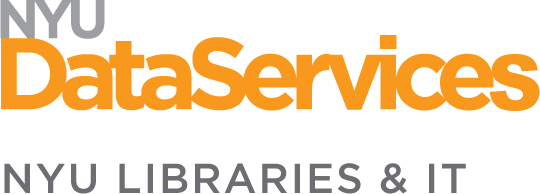
For assistance, please submit a request.
You can also reach us via the chat below, email data.services@nyu.edu, or join Discord server.
If you've met with us before, tell us how we're doing.
Stay in touch by signing up for our Data Services newsletter.
Bobst Library, 5th floor
Mondays: 10am - 5pm
Tuesdays: 10am - 5pm
Wednesdays: 10am - 5pm
Thursdays: 10am - 5pm
Fridays: 10am - 5pm
Suggestions for best practice for 3rd Party Transcription:
Suggestions for best practice for Data Storage:
NYU Digital Accessibility Program- Read&Write
Text to Speech is a downloadable software that reads aloud what’s on the screen, which can be used to proofread transcriptions done manually or through a third-party transcription service.
NYU Adaptive Computing - Speech to Text Software Accommodations
The adaptive computing rooms at NYU make it easier for researchers with special accommodations to choose from a variety of mediums to ensure a smooth transcription process. *If you do not have special accommodations through the NYU Moses Center, please go to the above website and locate the “Inquire about these rooms” button to discuss your research needs with the computer center. For more information about the library services, please visit the website above or contact lib-accomodations@nyu.edu or (212) 998 2509.
For qualitative researchers, transcribing is an integral element to the research process. There are a variety of ways that researchers can approach transcription and the preparation of qualitative data for analysis. While many researchers transcribe interviews manually there are also a variety of resources that can be used in conjunction to speed up the transcription process while retaining the accuracy of manual transcription. The following resources will highlight some considerations for you as you begin the process of preparing and cleaning your qualitative data.

How To Order a Transcript on NYU Stream
ATLAS.ti 9 has incorporated new features that allow users to edit transcripts directly in the user interface.
Branley, D. (2004). 'Making and Managing Audio Recordings' in Clive Seale (ed) Researching Society and Culture (2nd edition), London: Sage, pp 207-223
Lapadat, J., & Lindsay, A. (1999). 'Transcription in Research and Practice : from standardisation of technique to interpretive positionings' Qualitative Inquiry 5(1) 64-86
Lewins, A. (1998). 'Transcribing Evaluation data' in Harvey J. (Ed) Evaluation Cookbook Online , Learning Technology Dissemination Initiative, Herriot Watt Edinburgh.
Stockdale, A. (2003). An Approach to Recording, Transcribing, and Preparing Audio Data for Qualitative Data Analysis Education Development Center, Inc.